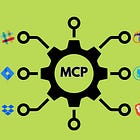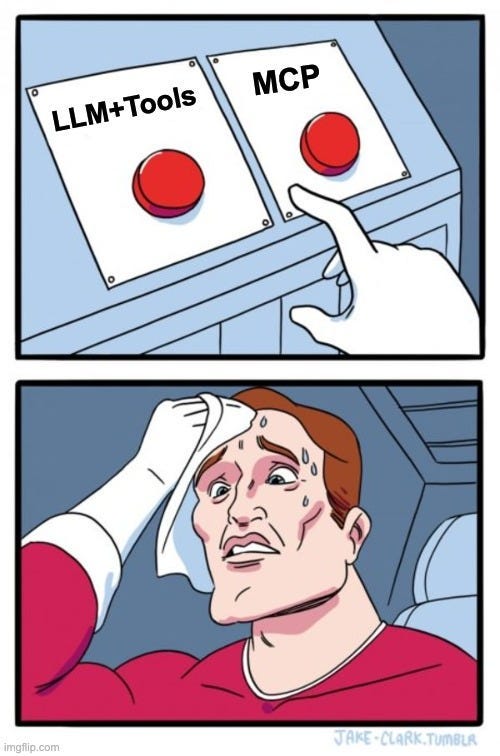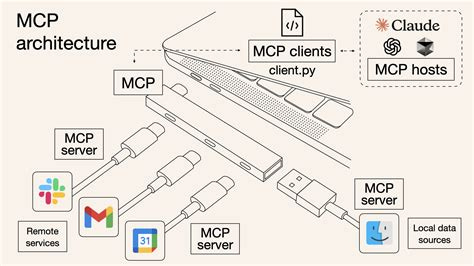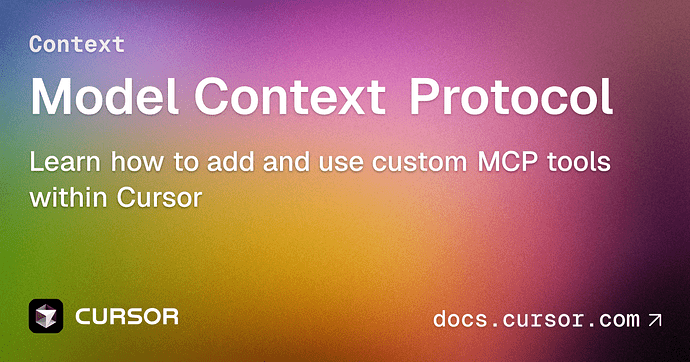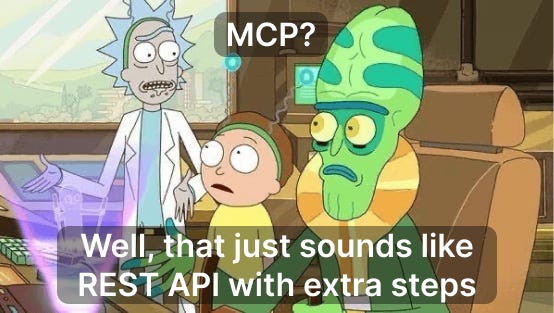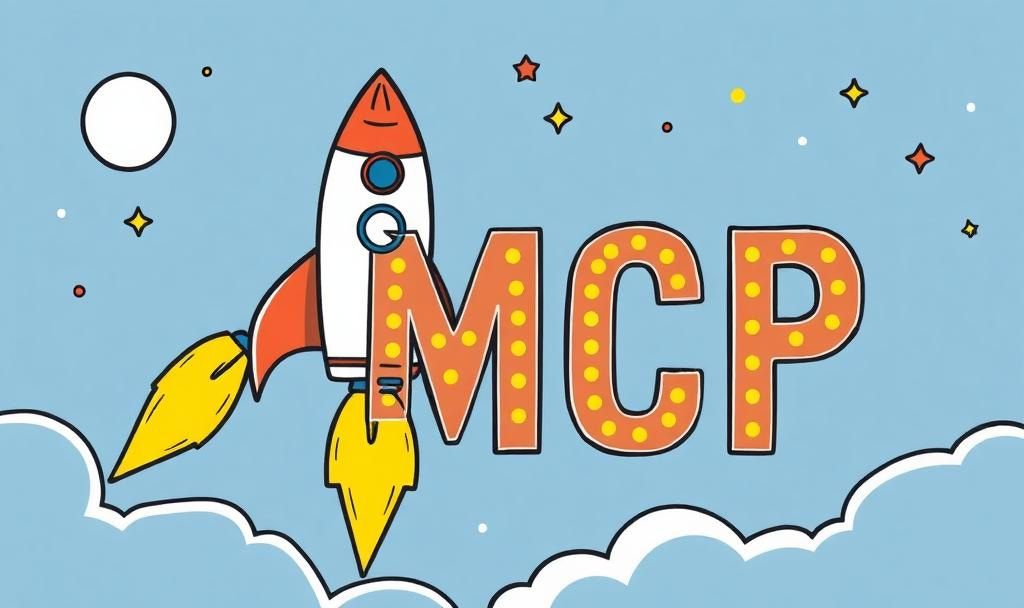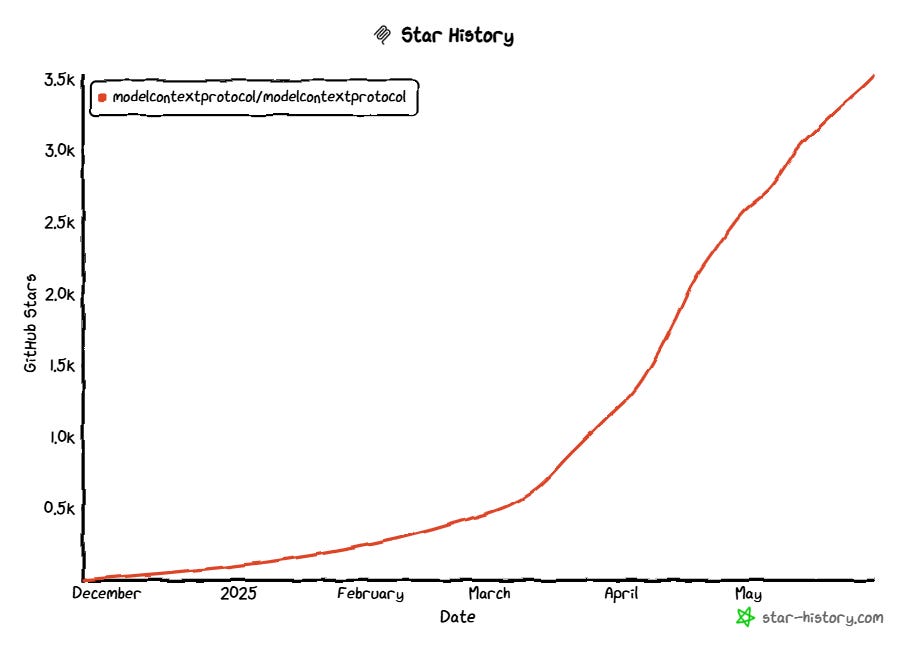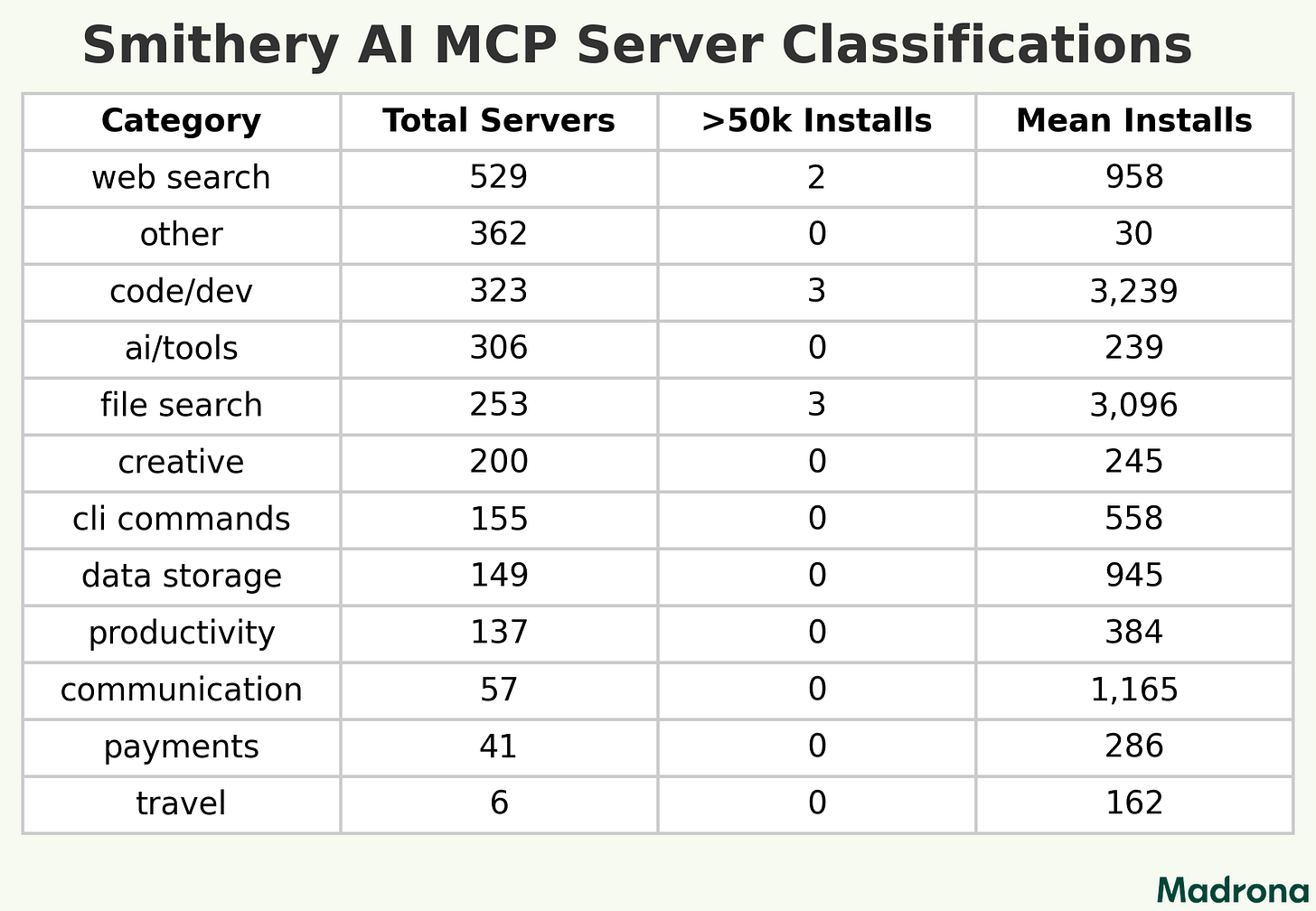MCP, Part II: What can MCP do for you?
Model Context Protocol (MCP) expands agents’ functionality beyond chat by connecting to external services. Let's explore some top use cases.
TLDR: The Model Context Protocol (MCP) is a promising development in the AI world because it tackles a very pragmatic problem: how to connect powerful AI models with the wealth of internal knowledge and third-party tools they need to be truly useful. In the second post in my MCP series, we explore early use cases for MCP, what else is needed for MCP to shine in the enterprise, future use cases, and what this space might look like by year-end.
Is MCP the Future—or Just Another Flash in the Pan?
If you've spent any time in tech Twitter, GitHub, or a VC partner meeting this year, you've probably heard three letters over and over: MCP. The Model Context Protocol has exploded onto the scene as 2025's most hotly debated technology. Proponents hail it as the “USB-C for AI agents”—a universal plug-and-play interface that could finally unlock truly useful autonomous systems. Skeptics say it’s just another overhyped protocol destined for the same graveyard as LangChain plugins and OpenStack. So which is it? A fundamental breakthrough for the agentic era—or a shiny standard that’ll be forgotten by Q4? In this deep dive, we cut through the noise and take stock of what’s actually happening across startups, open source, and Big Tech.
Reminder: In Part I of my MCP Mini-Series, which you can check out below, we discussed several key topics, including:
What MCP is
What its origins are
Why it’s useful for developers
Why MCP has huge implications for enterprise AI adoption
In this post, we turn our attention from theory to practice. What can MCP do for you?
Introduction: So, what can MCP actually do for you?
In just a few short quarters since its introduction by Anthropic, MCP’s ecosystem has exploded, fueled by a vibrant open-source community, support from tech giants, and a large and maturing base of venture-backed startups building around the standard. Seemingly every week in 2025 has brought new startups emerging from stealth, product announcements from AI leaders, and companies announcing MCP support.
And yet, there remain many skeptics among us. What’s the point? Can’t we just use existing LLMs and orchestration tools?
Source: Tumblr, imgflip.com
MCP Use Cases: Current and Future
Incorporating MCP into LLMs and AI agents provides massive advantages over traditional methods. Consider how AI tools were built before — custom functions for database access, file manipulation, version control — with detailed documentation explaining when to use each one. Doesn’t sound too bad, right? However, when trying to leverage tools across different frameworks, builders often need to spend hours rewriting essentially identical code for different projects. Total headache.
🚀Early Use Cases: Where MCP Is Already at Work
While MCP is still in its early stages, several compelling use cases are emerging:
1. Context-Aware Assistants (Enterprise Copilots): Companies are building internal copilots that can “plug into” an MCP layer and instantly understand key workflows, org charts, knowledge bases, and CRM data. Instead of spending months integrating with APIs or retraining models, these copilots simply ingest the MCP context & go.
Image Source: Modelmetry
2. Multi-Vendor AI Orchestration: Enterprises are testing multiple LLM providers simultaneously—OpenAI, Anthropic, Mistral, and others. MCP allows them to abstract the context layer so they can swap out the underlying model without having to re-engineer everything.
3. Security and Governance Layers: MCP is being used to standardize how context is passed into models, making it easier to apply consistent policies around data sensitivity, access permissions, and audit logging.
4. Coding Assistants: Vibe coding tools such as Cursor, Replit, and Windsurf have become extremely popular use cases for MCP. In Cursor, for example, simply open the Cursor editor, click the settings icon (top-right), select "MCP" from the left menu, then click "+ Add new global MCP server" to get started.
🔮 Future Use Cases on the Horizon
As the ecosystem matures, MCP will expand beyond copilots:
Composable AI Workflows: Chaining together several narrow models, each grounded in a different slice of enterprise context—HR, finance, customer ops—via MCP, enabling orchestration of complex workflows across domains with minimal glue code.
Autonomous Agents with Real Context Memory: MCP could become the memory layer for autonomous agents, helping them retain and reason over context across long-running sessions or even across tools.
Plug-and-Play Enterprise Apps: Developers could ship context-aware apps that work out of the box inside any enterprise as long as there’s an MCP-compatible context layer.
🧱 What Else Is Needed for MCP to Thrive?
History is littered with examples of protocols like OpenStack that launched to great excitement and ran out of steam. Additionally complicating matters is that MCP “complements” such as Google A2A and Cisco ACP could theoretically expand to become full-fledged alternatives in the future.
To move from early pilots to widespread adoption, several developments are necessary:
Better Tooling: Developer-friendly SDKs, wrappers, and devtools that simplify defining, managing, and updating model context.
MCP-Native Model Support: Broad buy-in across major model APIs, including native support for MCP schemas, would be a significant advancement.
Cross-Vendor Standards: Similar to how JSON and REST.API enabled interoperability across the internet, MCP needs a community-driven spec that's open, flexible, and widely adopted.
Human-in-the-Loop UX: Enterprises desire visibility into what context is being used and how it’s influencing outputs. Dashboards and explainability tools are expected to emerge later this year to address this concern.
Examining the MCP Ecosystem: Startups and Tech Industry Adoption
In many ways, the MCP landscape has matured far sooner than expected. Below is a summary of the companies that are working hardest to accelerate MCP’s path to becoming a ubiquitous layer in the AI stack:
🚀Venture-Backed Startups Building on MCP
The number of interesting startups that are choosing to actively build products and infrastructure around the MCP ecosystem is growing every day. See below for a sample of VC-backed startups solving different challenges with MCP:
Cursor / Anysphere (SF): This company needs no introduction. AI-powered code editor that added MCP to access internal APIs and docs. Raised ~$1.1 B from investors such as Thrive Capital and a16z.
Dust (Paris): An “AI OS” startup helping enterprises build agent workflows. Uses MCP to connect agents with business tools; backed by Sequoia Capital and XYZ.
StackOne (London): Secure AI platform supercharging SaaS and AI developers to build real-time enterprise integrations. Supports MCP for complex enterprise use cases. Raised $20M+ GV, Workday, and angels from OpenAI and DeepMind.
Aracor AI (Miami): AI legal assistant for contract review and compliance. Raised $4.5M pre-seed; MCP allows it to tap into legal data securely.
Nace AI (Palo Alto): AI agents for risk and compliance. Raised $5M from General Catalyst; uses MCP to access audit logs, finance tools, and compliance systems.
Note: List is obviously non-exhaustive.
Honorable mentions include Replit, the popular online IDE, which recently announced MCP support…Sourcegraph, a developer platform, which also incorporated MCP into its Cody code-assistant…mcp.run (Dylibso), an enterprise productivity platform that offers a secure registry of AI tools to manage MCP servers…and Composio, an integration platform for AI Agents & LLMs that offers managed MCP support.
What are some other MCP startups I missed? Feel free to comment your favorites below…
🥇 Support from Tech Incumbents and AI Leaders
It’s rare to see fierce AI competitors (OpenAI, Anthropic, Google, Microsoft, Amazon) align to a single standard, but that’s exactly what’s happened with MCP. Not to be outdone, many tech industry giants in other sectors have followed suit and also hopped on the MCP bandwagon train.
1. Zapier - Workflow Automation Meets the AI Era
An early leader in workflow automation has entered the AI era. Zapier-loyalists can now use the company’s MCP Server to connect AI Agents to over 8,000 apps. Zapier MCP is currently available in beta and free to use.
2. Shiprocket – AI-Integrated eCommerce Enablement
India-based Shiprocket, preparing for its IPO, announced what it calls the “country's first AI-integrated MCP server”. The initiative aims to drive autonomous digital commerce by enabling real-time decision-making and personalized consumer experiences through MCP.
3. Block (Square) – AI-Powered Payment Integrations
Block integrated MCP internally to connect their payment systems and databases with in-house AI assistants. Now, with a dedicated Square MCP server, sellers using the company’s products can also enlist the help of an AI agent to build their business on Square’s entire suite of API resources and endpoints.
4. Cloudflare – Edge Computing and AI Integration
While primarily known for its web infrastructure services, Cloudflare has adopted MCP to enable AI models to interact with edge computing resources, ensuring low-latency and secure data processing.
5. Stripe - Add Payments to Agentic Workflows
You can use the Stripe MCP server if you use code editors that use AI, such as Cursor or Windsurf, or general-purpose tools such as Claude Desktop. By connecting AI Agents to Stripe via MCP, business can also address common payment-related queries from customers using AI instead of human agents.
📊 Current State of MCP: By the Numbers
Looking at the raw numbers, it’s clear that MCP’s explosive growth is driven primarily by the creation of new servers and development tools — the “supply side” of the ecosystem. These are the building blocks that developers make available for AI agents to use: search tools, API connectors, data access layers, and more.
To better understand MCP's trajectory since its inception in November 2024, let's examine some key metrics:
1. GitHub Star Growth for MCP Repositories
The number of active MCP servers has expanded rapidly, showcasing the protocol's widespread implementation across various platforms and services.
Source: star-history.com
Summary: The latest data pulled from GitHub shows the MCP servers repository has witnessed exponential growth in GitHub stars, reflecting the developer community's increasing interest and adoption. The steep growth curve beginning in early 2025.
2. Top MCP Server Classifications
The number of available MCP servers is growing rapidly. The official MCP typescript SDK is currently averaging around 2.8M weekly downloads from npm. Interestingly, data from Madrona shows that actual usage is concentrated. Of Smithery’s 2,500+ MCP servers, only 8 have surpassed 50,000 installs, a classic power law distribution.
Source: Madrona Venture Group
Analysis: The data suggests that supply of MCP offerings is still outpacing demand, with only a handful of MCP servers achieving meaningful adoption out of thousands. Additionally, it’s interesting to note that the “web search” category has the highest number of MCP servers, while “file search” and “code/dev” servers have high installs per server - over 3k each. This suggests that early users are likely to be technical founders looking for practical use cases, as opposed to mass-market ones. Despite the hype, it’s a clear reminder that we’re still early.
Final Thoughts & Takeaways
What’s Next for MCP
It’s too early to tell whether MCP will be the winning standard of the “AI Era”. The AI landscape is moving too fast, with new groundbreaking new AI products seemingly getting released every day. But MCP’s strong early support shows a clear demand for extending agents’ functionality with a well-understood protocol. However, it’s clear from the data that supply clearly outpaces demand, with issues such as security and governance likely holding back broader MCP adoption.
What this Space Might Look like in 2026
While it’s too early to tell what MCP will look in the future - we can have a little fun by making some educated guesses. By mid-2026, here are a few predictions for MCP:
MCP integration into several open-source frameworks (LangChain, LlamaIndex, Semantic Kernel, etc.)
Deployment of the first “MCP-native” enterprise copilots in production environments
Formation of an MCP Global Standard Body— the global version of Anthropic’s MCP Steering Committee
Emergence of startups addressing tooling gaps: context governance, debugging, data security, schema evolution, etc.
Large companies updating their Vendor Security Assessments with the following question: “Are you MCP-compliant?”
Will these predictions come true? Only time will tell. I’ll plan to re-examine my predictions this time next year - excited to watch this space in the meantime.
Disclaimer: The information contained in this article is not investment advice and should not be used as such. Investors should do their own due diligence before investing in any securities discussed in this article. This article is based on my opinions and should be considered as such, not a point of fact. Views expressed in posts and other content linked on this website or posted to social media and other platforms are my own and are not the views of NextEra Energy Investments (NEI) or NextEra Energy (NEE: NYSE).




